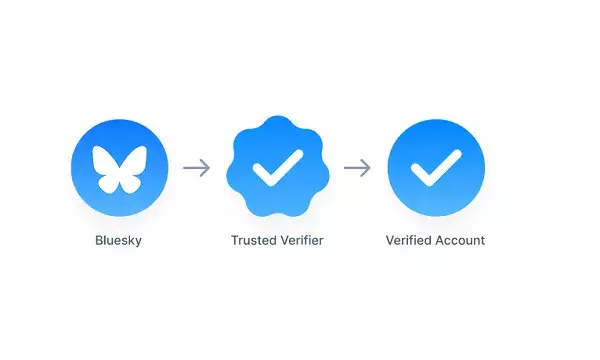In a time when misinformation spreads rapidly across social platforms, the introduction of Bluesky’s in-app verification checkmarks is a bold and crucial move towards establishing a more trustworthy environment. The latest expansion of this system is set to grant verification to a broader range of users, ultimately elevating the status of reliable and authoritative voices within the app. This initiative not only allows users to identify credible sources easily but also sets a precedent for how digital platforms can navigate the delicate balance between user authenticity and community trust.
Bluesky’s approach to verification diverges from traditional models in a significant way. Users will now see a rounded symbol adorning verified profiles, echoing the design of Bluesky’s logo. In contrast, established organizations like The New York Times can receive the coveted star-like checkmark, empowering them to verify their own personnel. This critical delegation of the verification process alleviates the workload on Bluesky, allowing reputable organizations to curate their own lists of verified journalists and high-profile figures, which serves to streamline the verification landscape.
Understanding the Nuances of Notability
However, the very term “notability” within the verification framework invites heated debate. Bluesky defines notability as the noteworthy status of an individual within a specific field or region, taking into account various factors, including media coverage and professional accolades. While the intention to create a standard for determining notable figures is commendable, it inevitably opens the door for subjective interpretation. Who gets to decide the criteria of “professional recognition”? The challenge lies in the potential disparity of judgment across different industries and geographies, leading to the risk of inequitable verification benefits.
Furthermore, the choice of trusted providers is a double-edged sword. While it empowers organizations with the autonomy to validate their users, it also raises questions about accountability. The landscape could become cluttered with varying standards of credibility, leading to confusion among users about what the different verification marks actually signify. Consequently, a “gray area” of interpretation may emerge, where the value of each checkmark could become compromised, as users grapple with understanding who deserves recognition and why.
Building Trust Through Verification
Despite these potential issues, there is an underlying belief in the benefits this new verification system can offer. By aiming to protect high-profile individuals who are exposed to the risks of impersonation, Bluesky’s approach seeks to bolster user safety and community integrity. The notion that verified users can be trusted creates a safer atmosphere for discourse, whether in the form of journalism, content creation, or open dialogue among influencers and followers alike.
However, clear communication from Bluesky about the verification criteria will be paramount to the success of this endeavor. The company’s current stance — that it will not engage with applicants unless their verification requests are approved — raises further concerns. Applicants may be left in the dark regarding their applications, fostering a sense of frustration if their requests are denied without substantial feedback. This lack of transparency could lead to backlash against Bluesky, especially from users who feel overlooked or undervalued.
The Path Ahead: Challenges and Opportunities
As Bluesky continues its rollout, it is crucial for the platform to adapt its strategies based on participant feedback. The emphasis on creating a trustworthy digital environment is commendable, but practicality must match aspiration. A dialogue with the community could yield beneficial insights, helping refine the criteria for notability and the verification process itself.
Moreover, as the landscape of social media evolves, Bluesky’s verification system may influence how other platforms approach authenticity and trust. Should it succeed, this could provoke a broader shift, encouraging more platforms to engage in transparent, proactive verification processes, thereby fostering an environment that prioritizes facts over sensationalism.
As Bluesky enters this new chapter, there is both promise and uncertainty. If navigated wisely, this innovative system could redefine online authenticity and user interaction, restoring faith in social media spaces injected with credibility, respect, and a commitment to reliability.


Leave a Reply